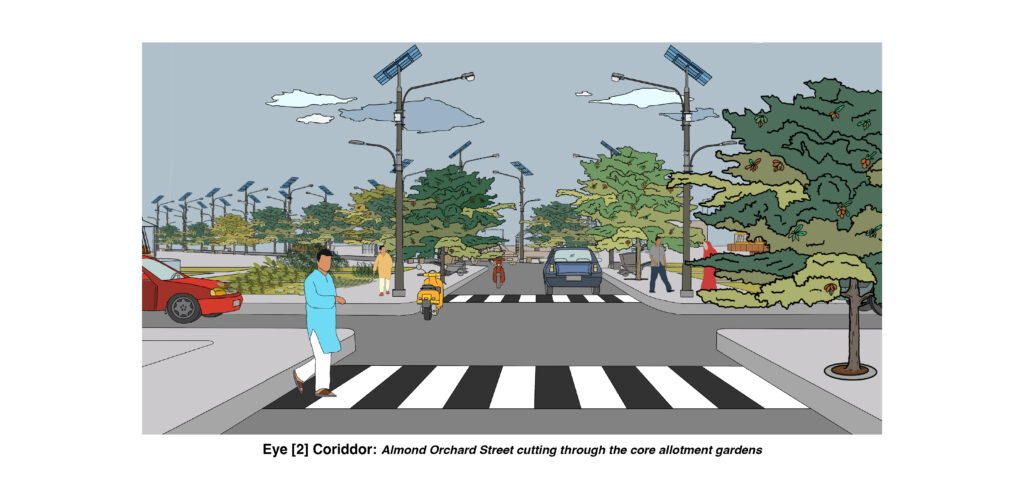Therefore recognising the potential of this unique infrastructure that has evolved on its own, by the community, for their use can be leveraged to create a productive infrastructure that supports such uses.
The project does this by 3 key design strategies:
- Carriageway– Re-design: ROW 25 mts is redesigned with allotment gardens. Each garden will be 2m x 5m at approximately 5mt distance. These gardens will include a plantation of 2-3 trees, shrubs and climbers per residents’ choice. These will be maintained by the residents through a lease policy.
- Redesign of 10 mts – These are the innermost streets, typically used by pedestrians and bicyclists. The ROW is redesigned with a continuous footpath incorporated with tree pits of diameter 1.2 mts at every 10 mts interval- Each corridor will be designated with a particular fruit tree, harbouring an identity (such as Mango street, lemon, sitafal, orange, banana, sapodilla) interspersed with medicinal and flowering varieties such as flame of the forest, neem, etc.; and palm varieties such as dates, coconut etc.)
3. Design of core – with 4 key aspects:
- Space allocation per sector: Each sector will have a total of 5% out of 35% of public land towards the productive core. These will be largely located in the centre of the sector.
- Division for allotment in the core: A grid (7 m x 7m) is considered post-analysis of gardens. These can be further subdivided as per the choices of the leaseholder.
- Systems supporting the garden: Each block of the garden will be equipped with functional and social infrastructures. Functional infrastructure include devices for water collecting, storing and irrigation system, and farmers’ market. Social infrastructure includes sitting spaces, libraries, cafes.
- Manual and guidelines for development and management of gardens: Each leaseholder will avail options for design as well as plantation guidelines. The leaseholders will also have to sign agreements towards sustainable farming clauses that will be included in the policy. The design guidelines will give precise architectural elements kit, which can be bought and assembled with the help of Eats Headquarters.
The project will give legitimate food growing spaces, as well as create a nice public space in the centre of the sector. It will also enable users to earn, exchange, and have access to healthier food in the vicinity of their houses.

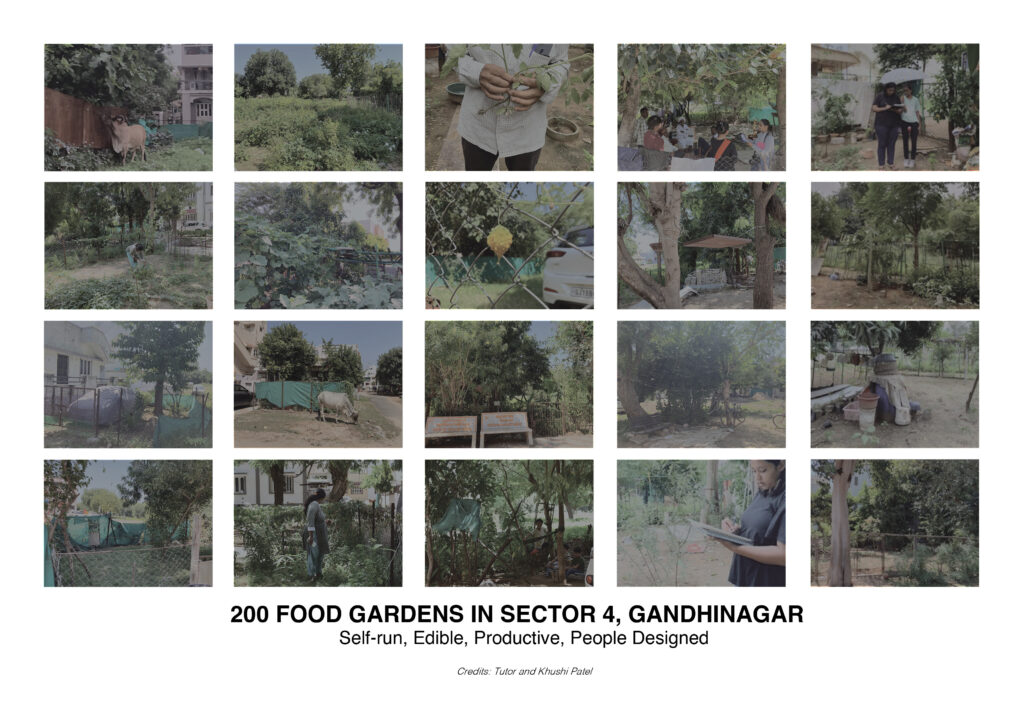
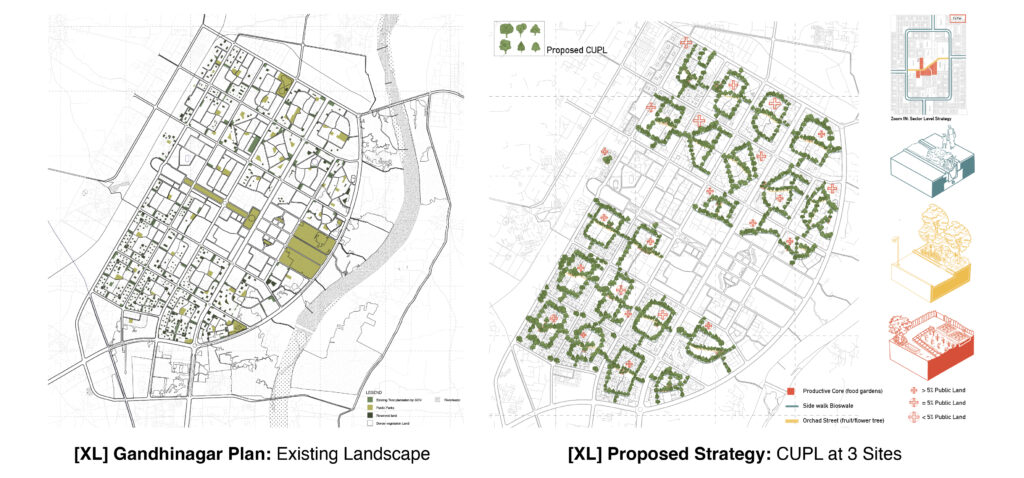
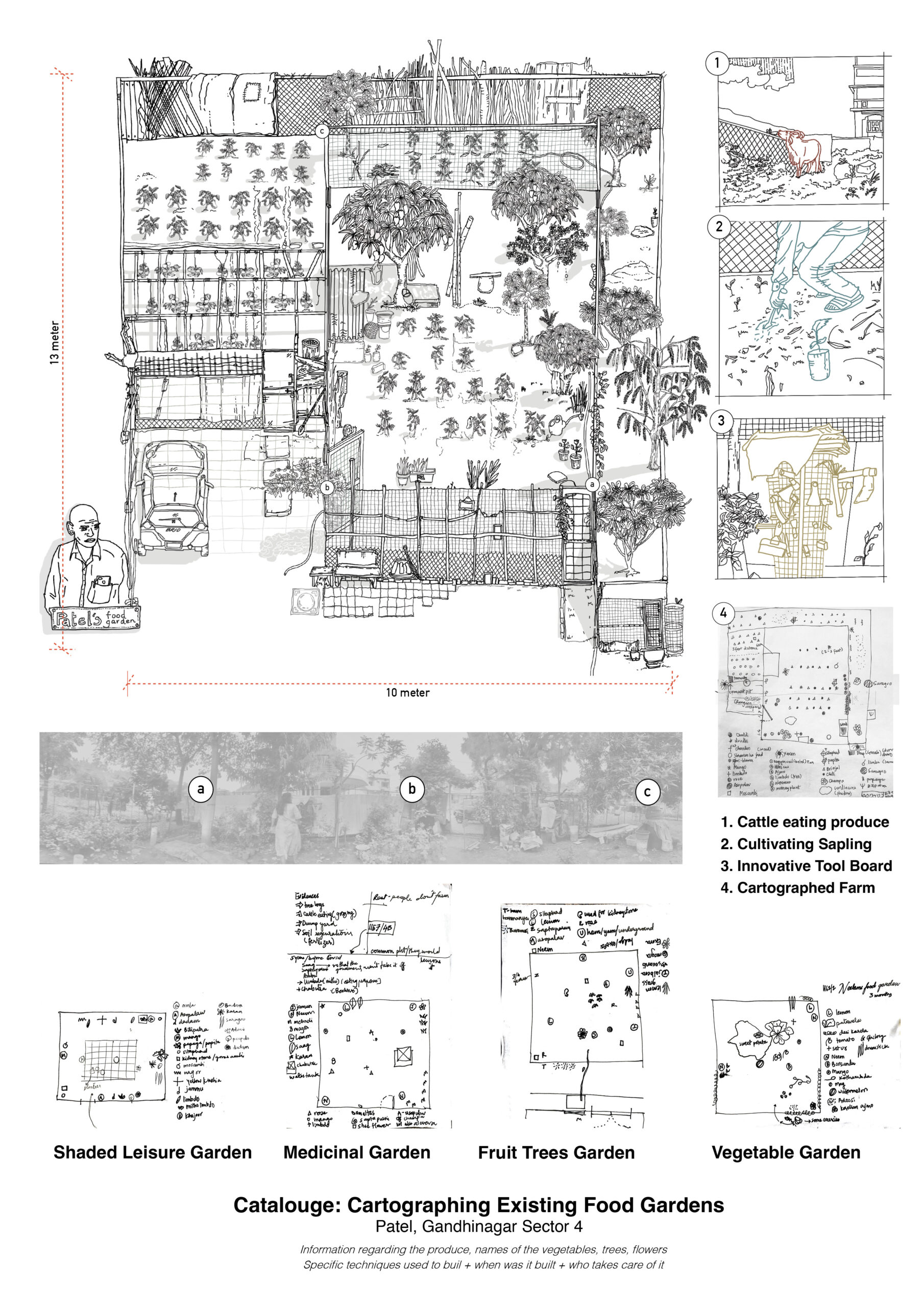
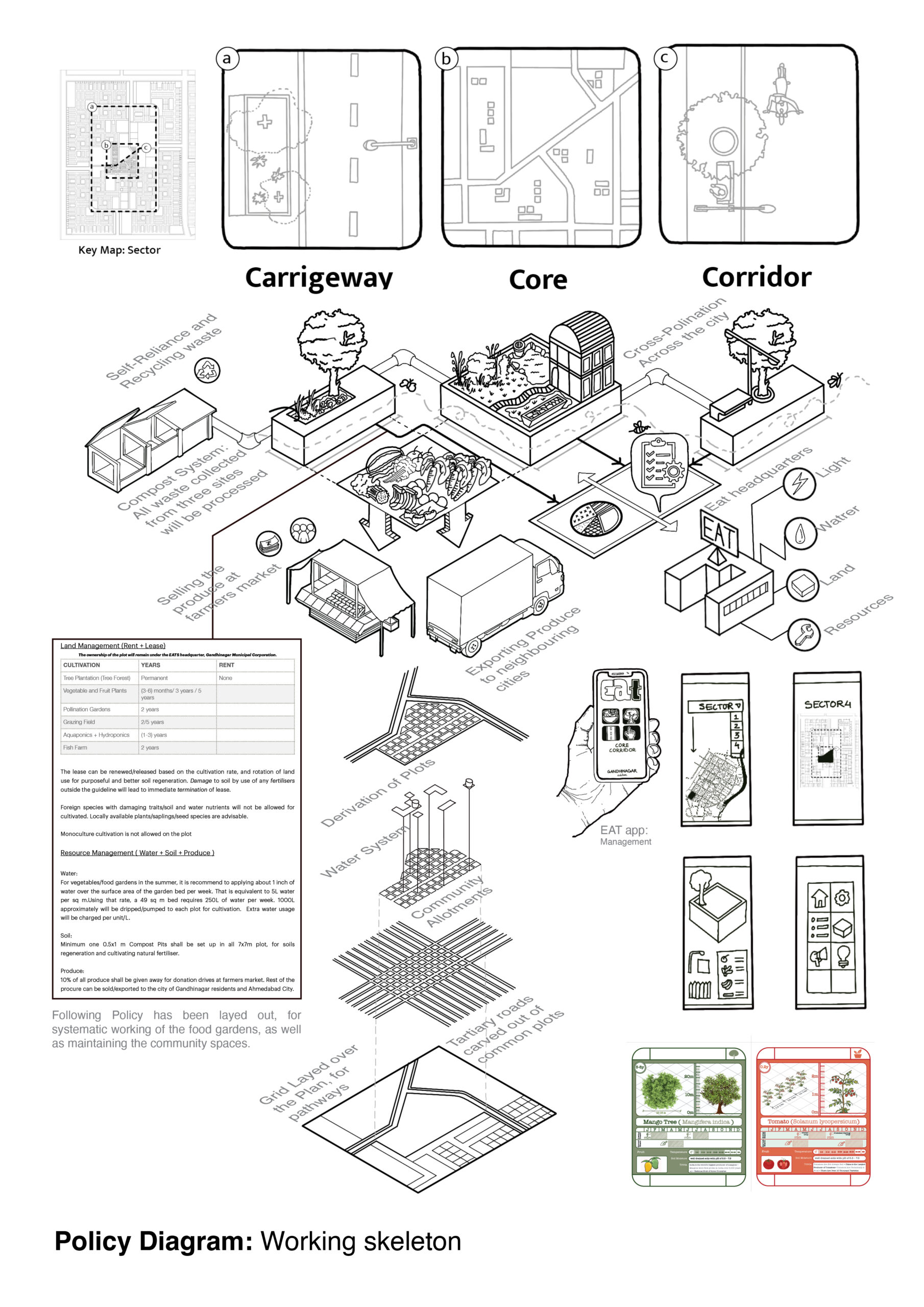
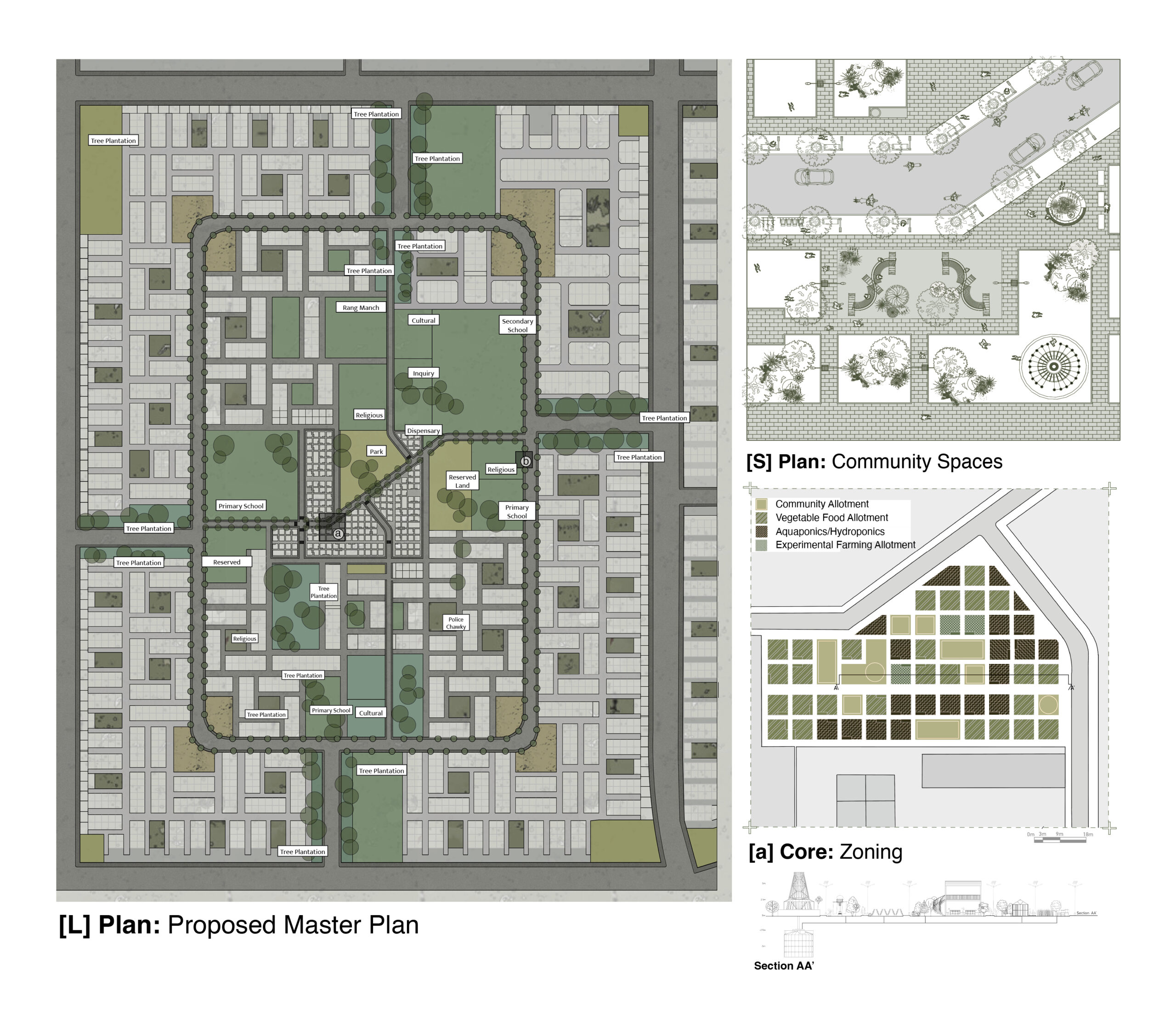

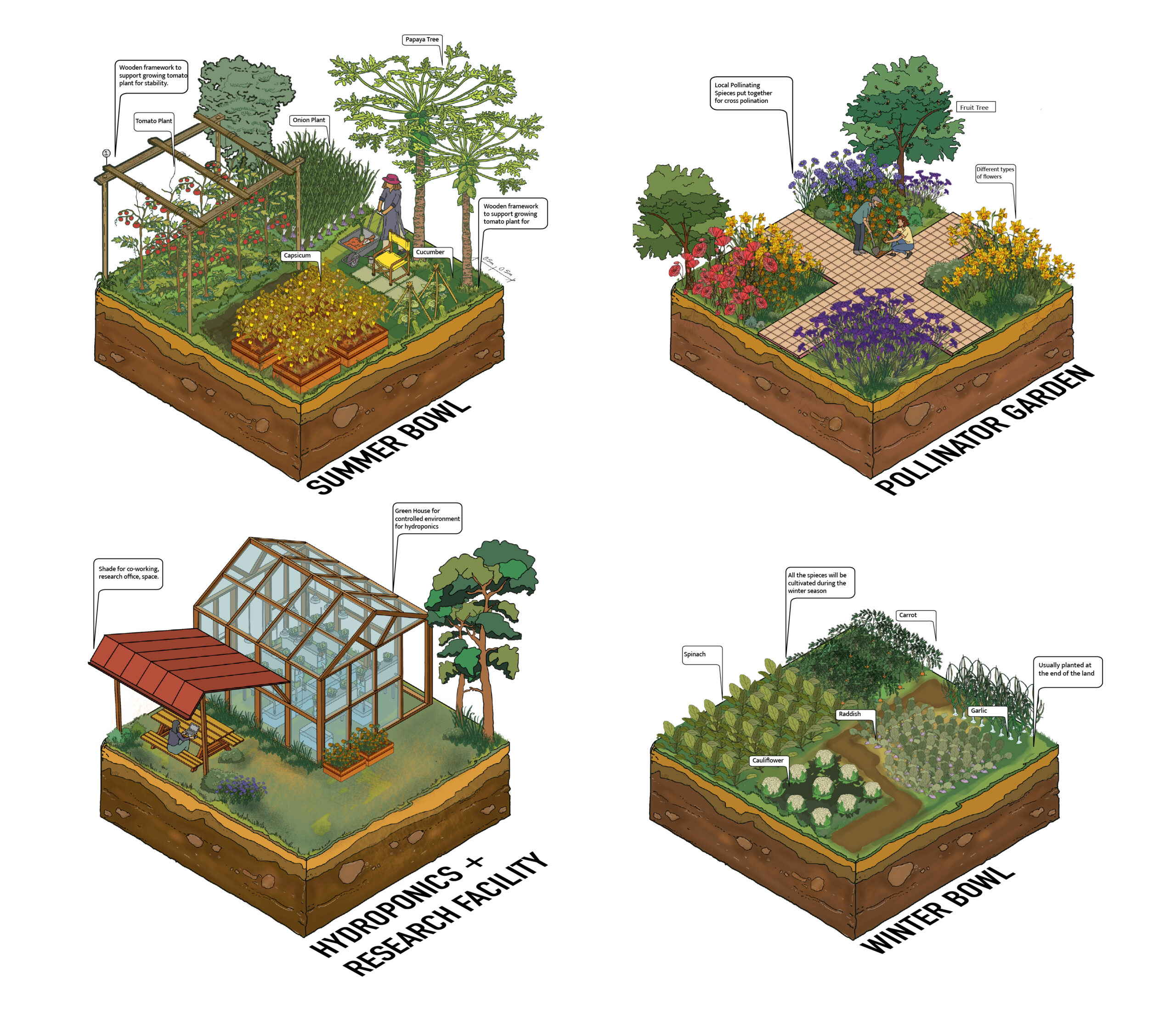
The project will give legitimate food growing spaces, as well as create a nice public space in the centre of the sector. It will also enable users to earn, exchange, and have access to healthier food in the vicinity of their houses.
